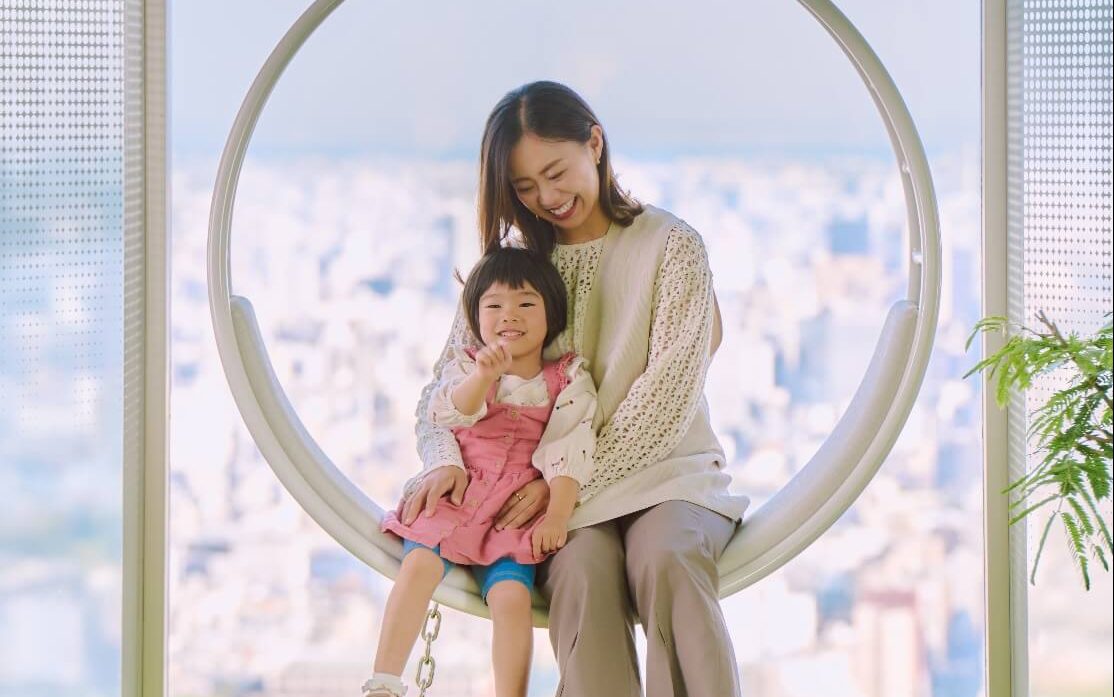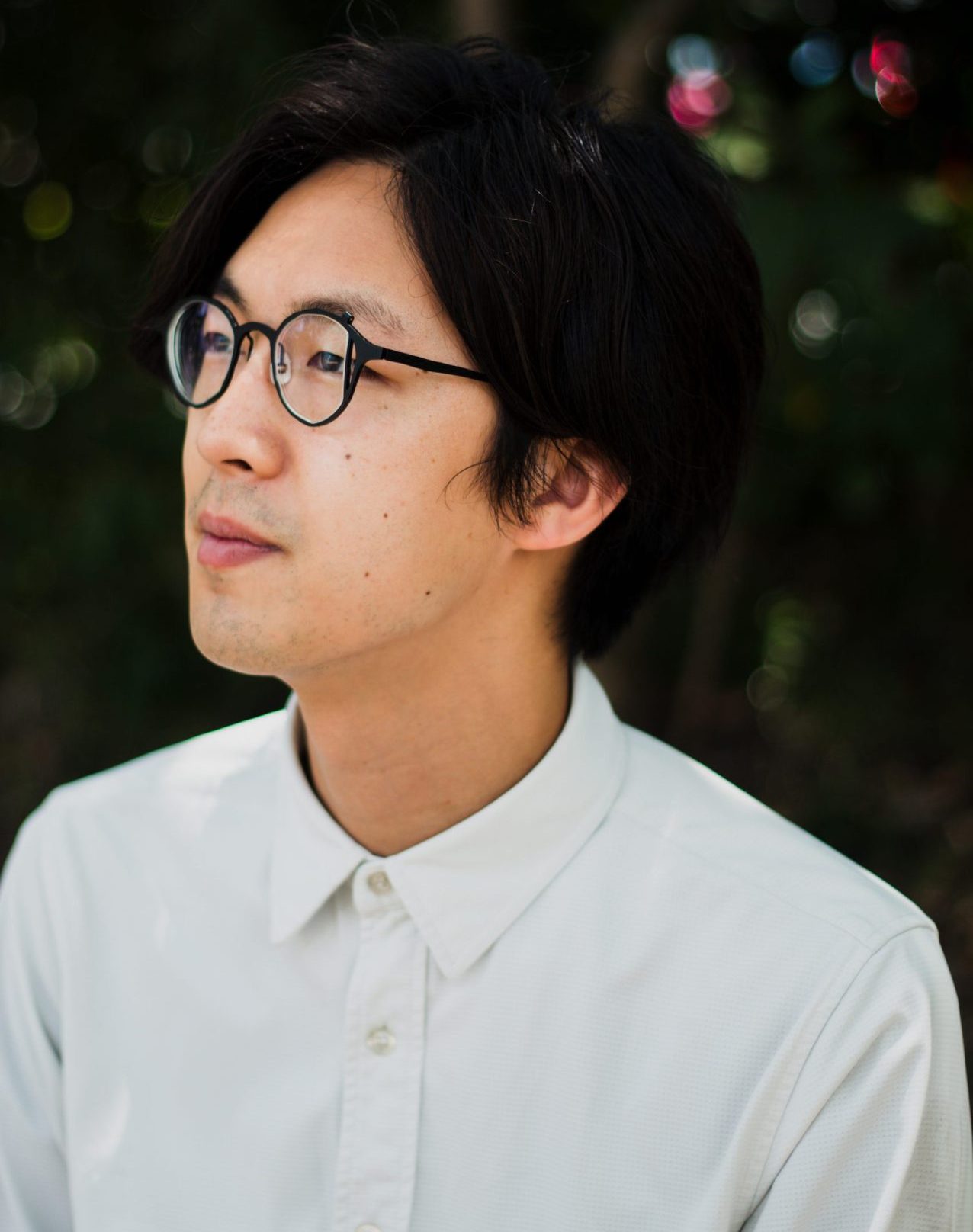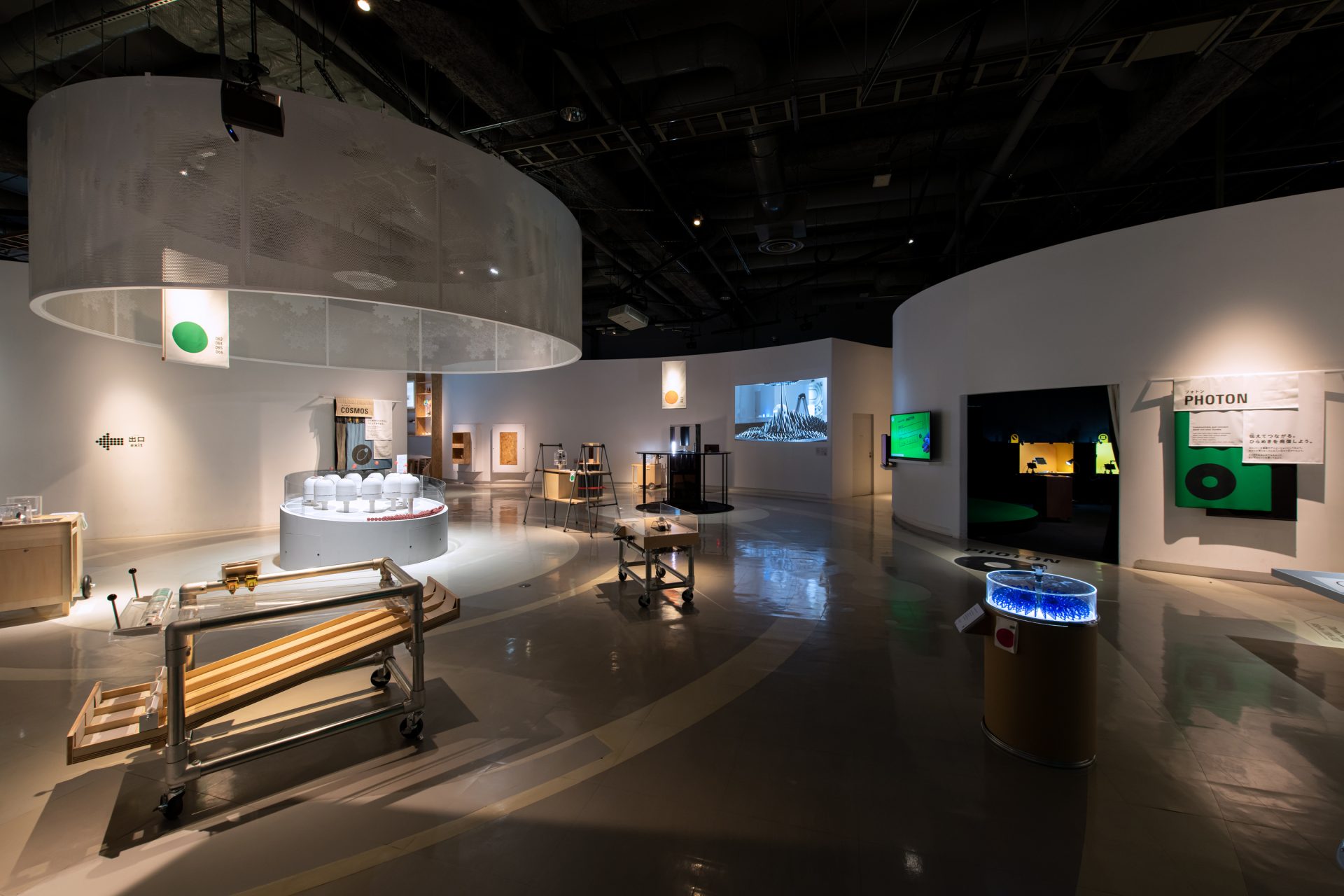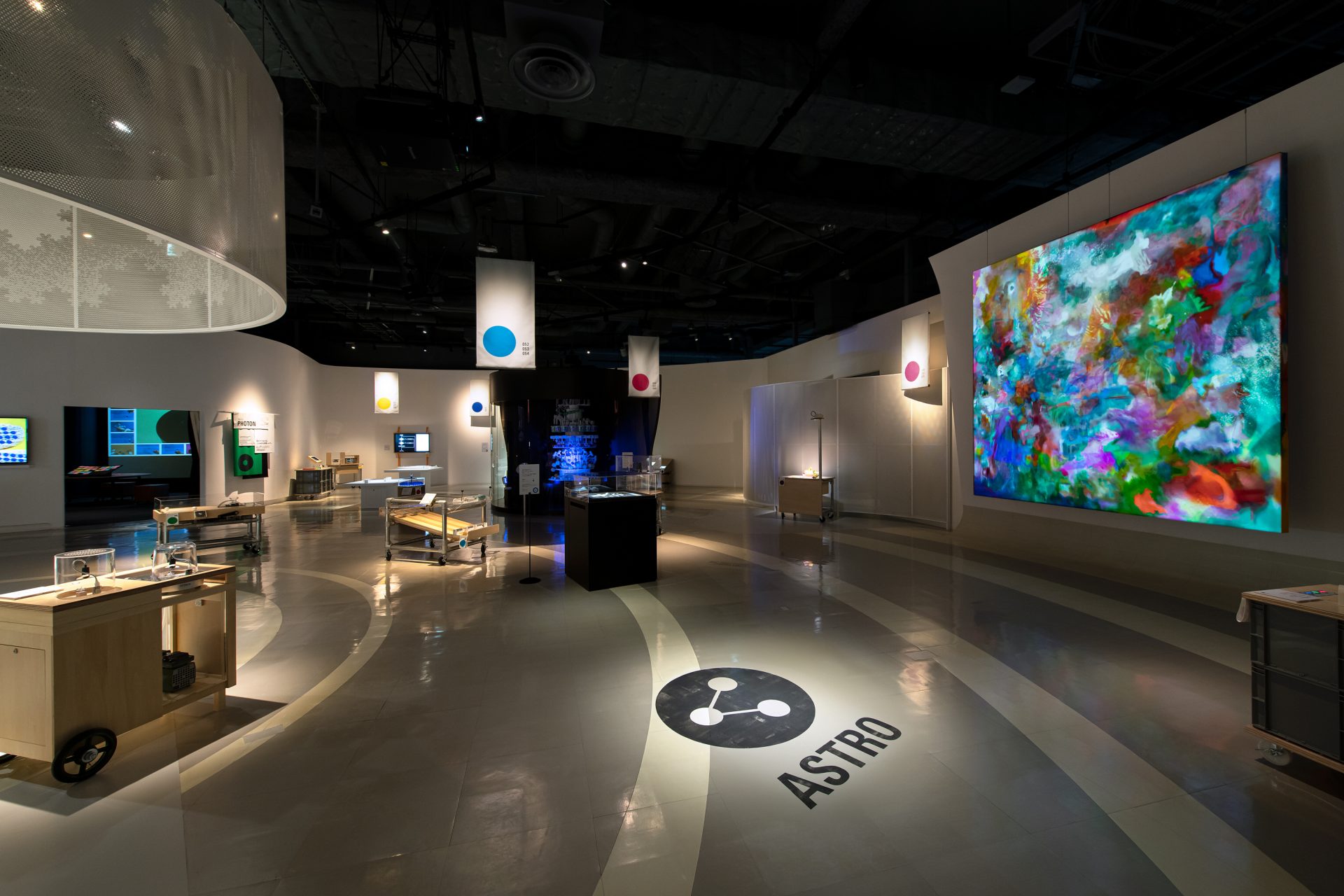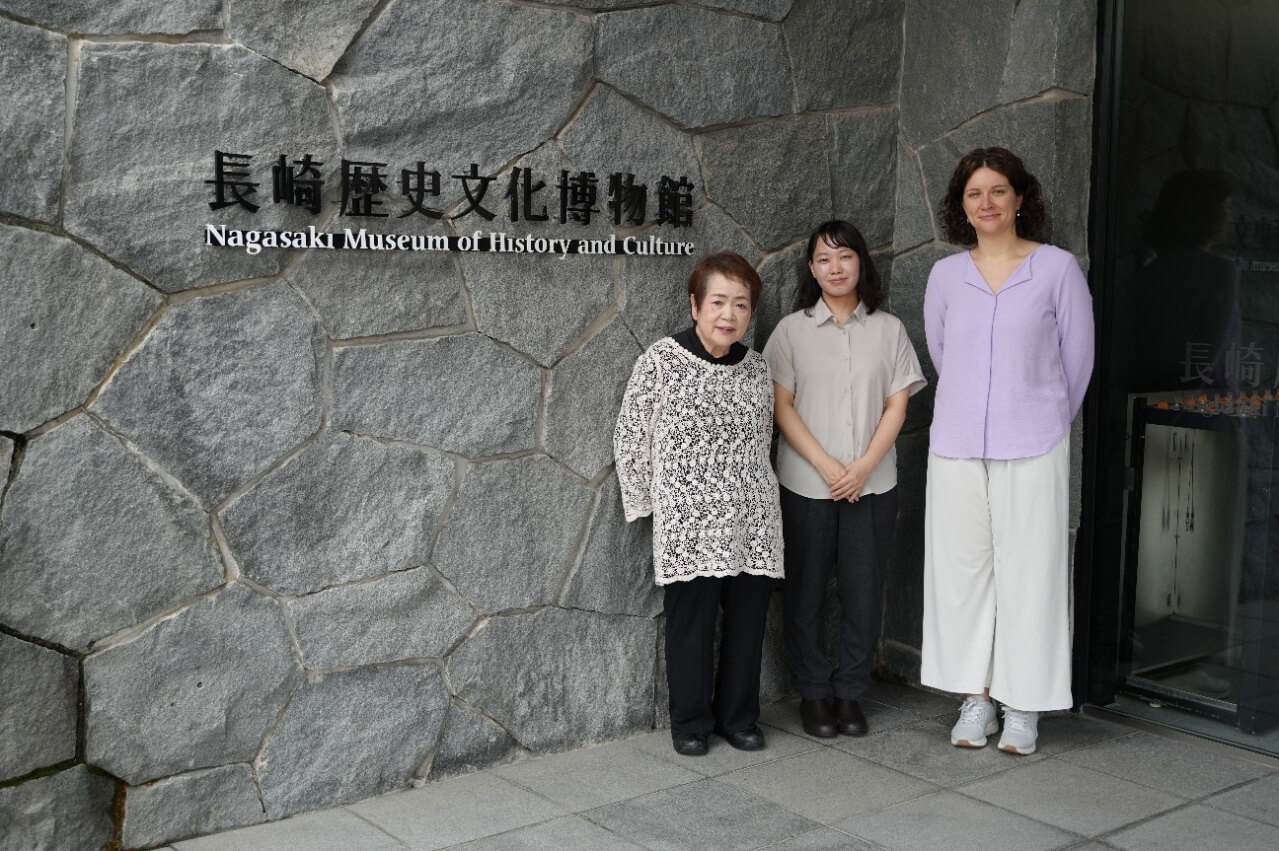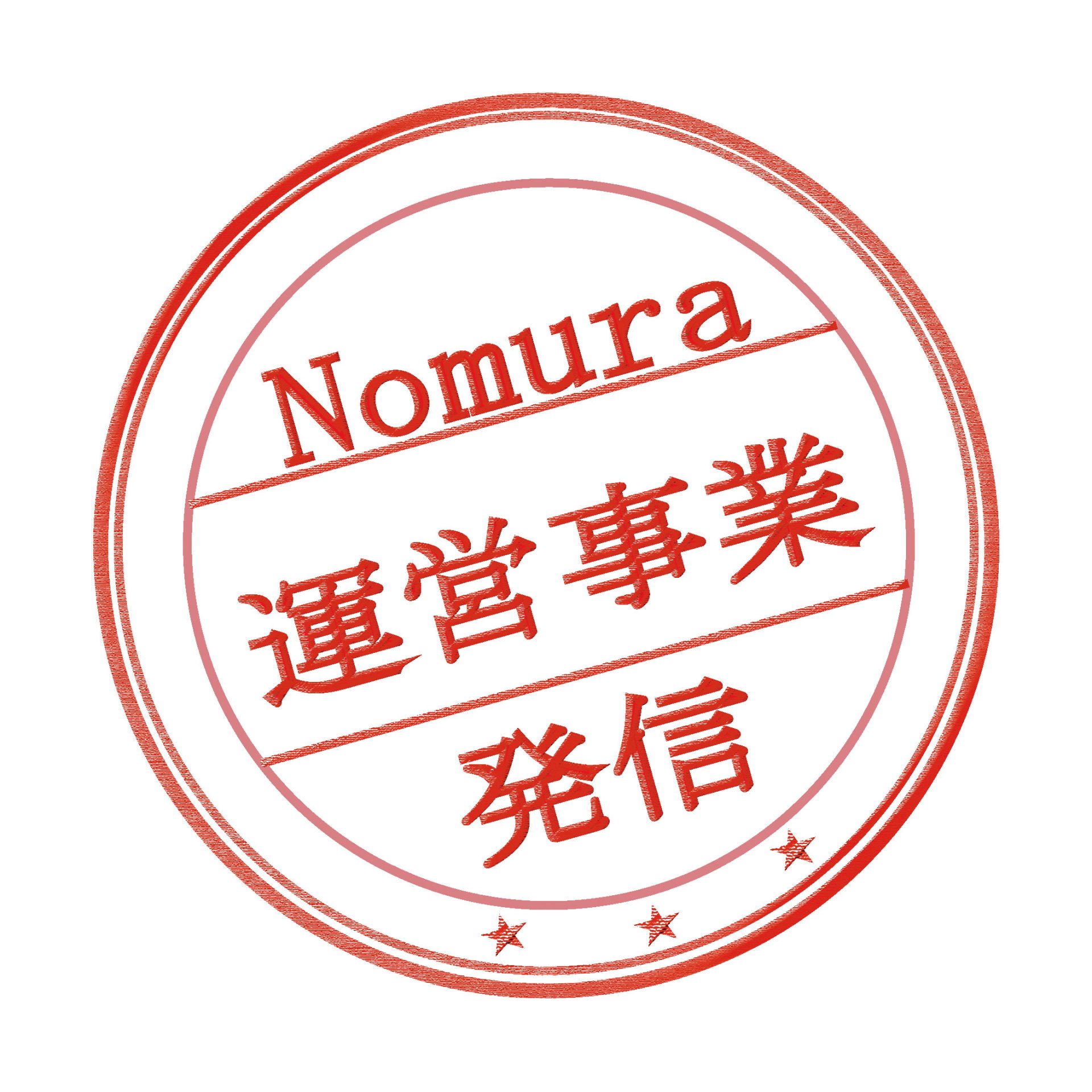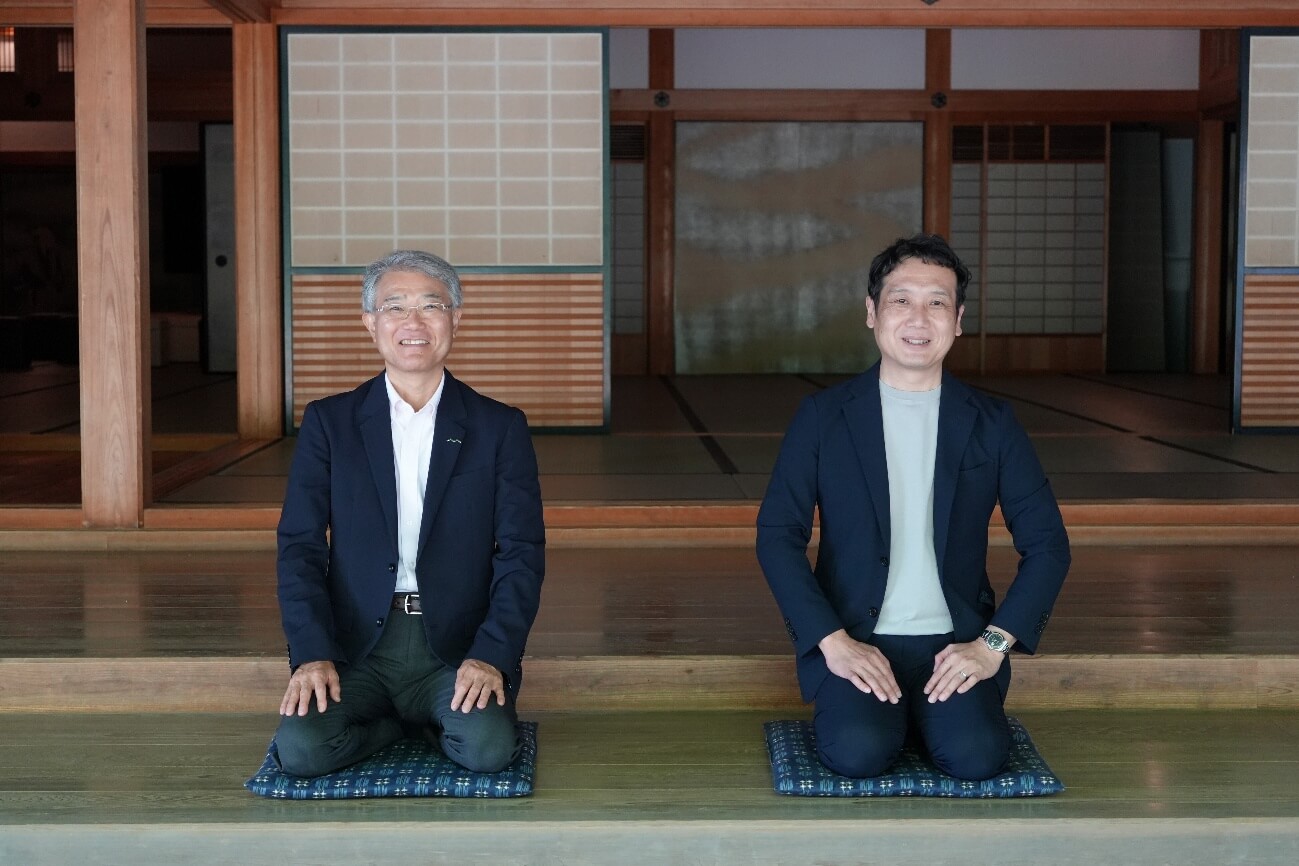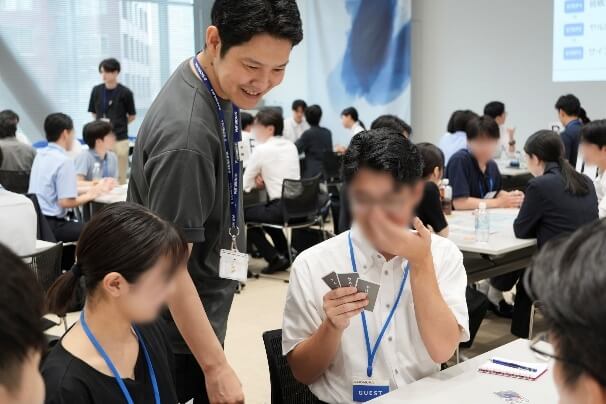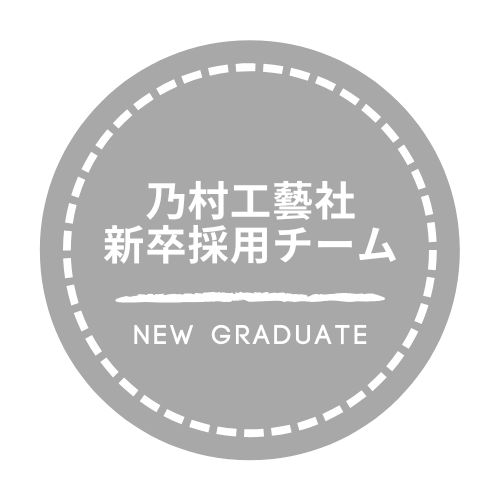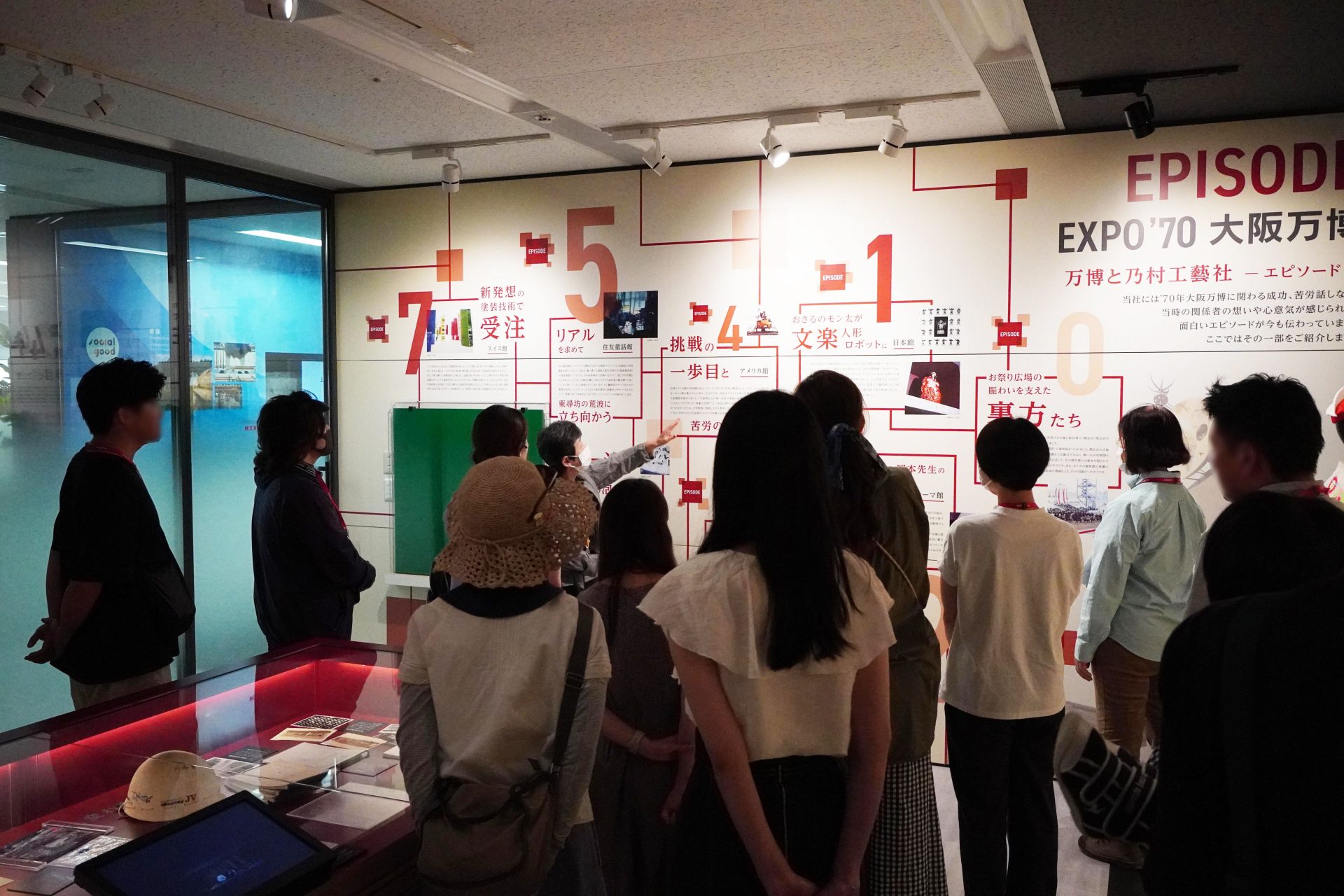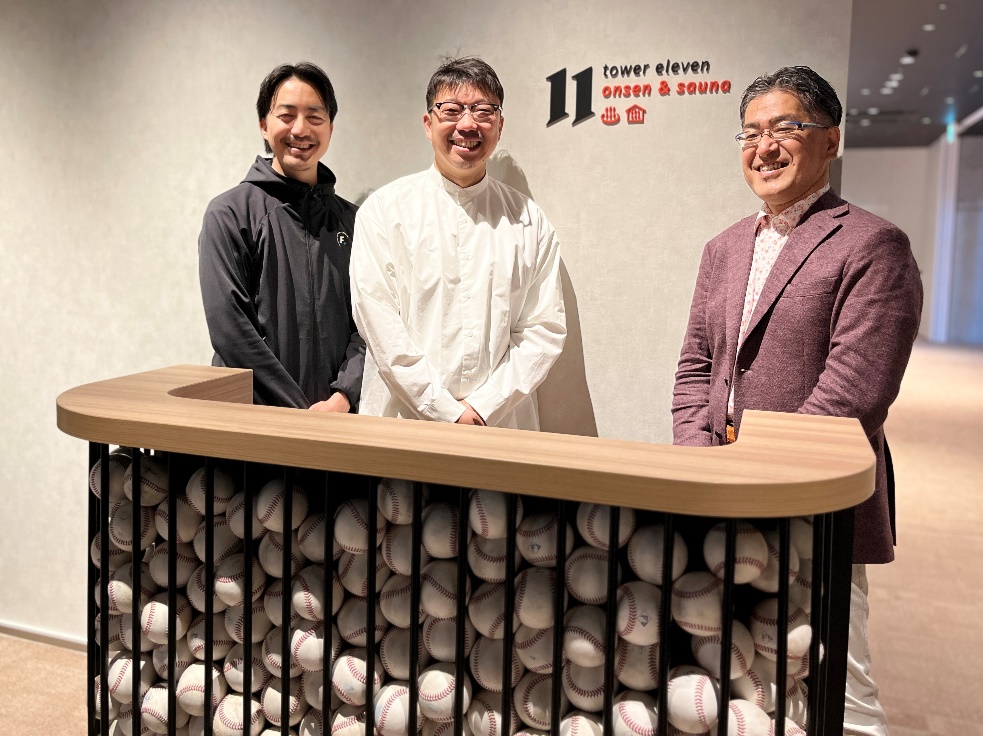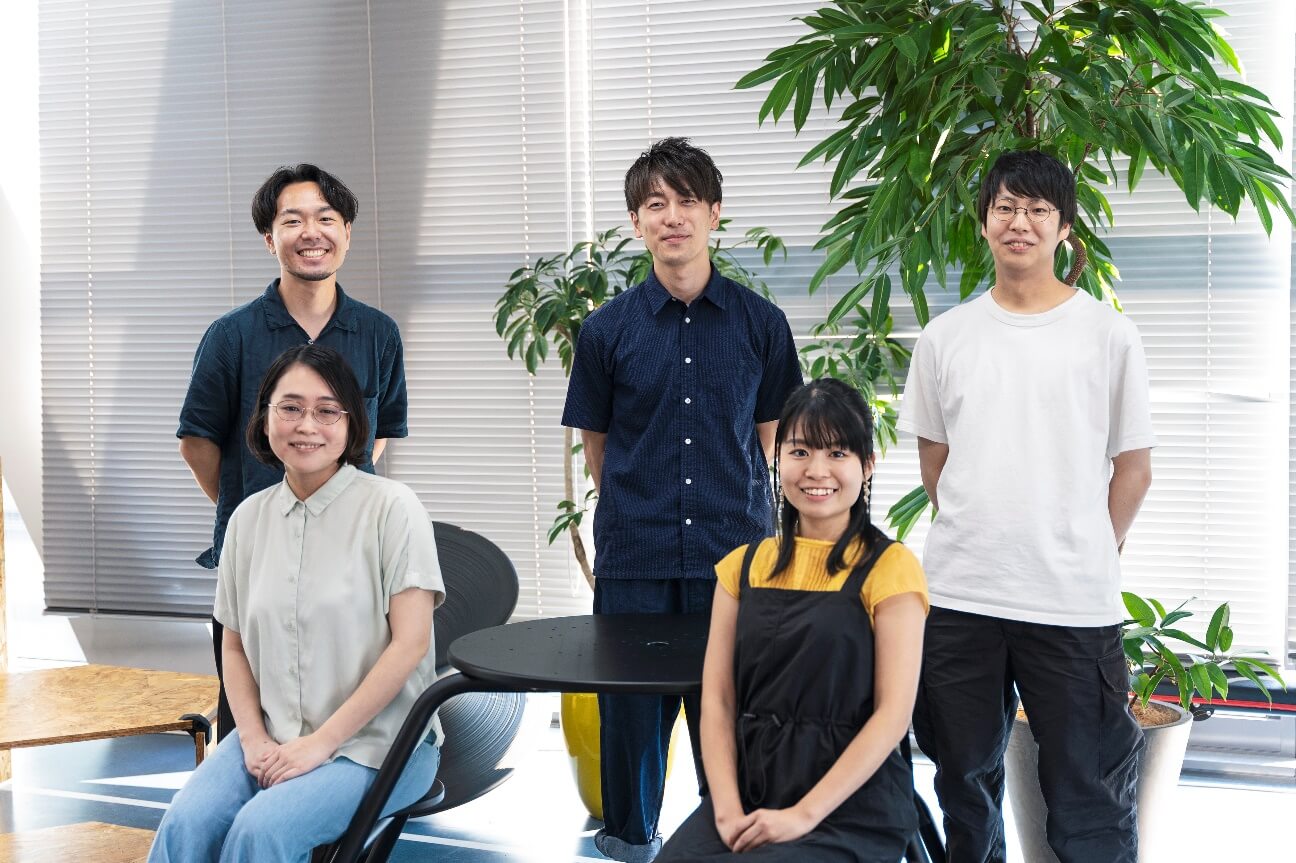
nomlog MEETS →
Studio Ao: Thinking with Professor Kawamura about spaces and experiences that will increase children's motivation
2024/09/04
- text and edit by
- nomlog editorial department
A dialogue series [nomlog MEETS→] NOMURA GROUP employees meet with experts who are active in various fields and explore the possibilities of future "spaces" and "experiences."
The theme of this event was "What content and space can do for the future of our children." A designer and planner in charge of hands-on facilities for children at NOMURA GROUP spoke with Tetsuya Kawamura of COLEYO, the owner of a project-based cram school in Kyoto that encourages children to take the initiative. Kawamura, a professional in creating lesson content, and members of NOMURA Co., Ltd. who are taking on the challenge of creating facilities that combine spatial design and exhibition content, discussed the elements necessary to increase children's motivation.
nomlog MEETS →
Tetsuya Kawamura (CEO of COLEYO Co., Ltd.)
After graduating from Ritsumeikan University, he joined Recruit Communications Co., Ltd. After working there for a year, he launched a project-based cram school called "After School Classroom Studio Ao" in Kyoto in 2016. His decision to jump into the blue ocean of education by not teaching subjects such as Japanese language or math has attracted attention from parents and educators.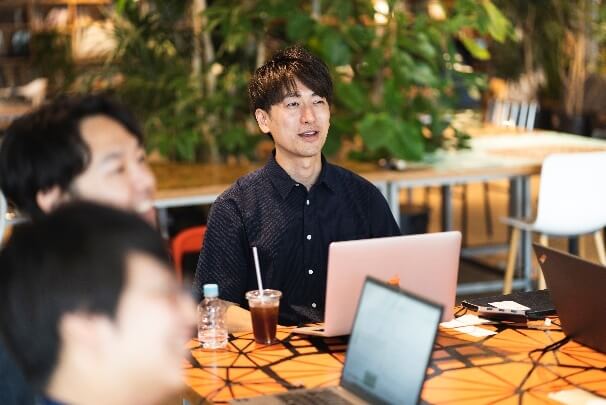
Kawamura:
First, let me start with my upbringing. I grew up in Hokkaido, one of seven siblings. My father was a psychiatrist, and the children of his patients and nurses also gathered there, so I grew up in a large family with many children.
After graduating from university, I joined Recruit Communications Co., Ltd., where I worked in the human resources advertising production department, recruiting for clients who dealt with cutting-edge technology. During that time, I learned about the idea that technological advances will lead to a situation where there is no difference in individual abilities, such as "anyone can find out information immediately by searching on an iPhone" or "everyone's eyesight will be the same if they wear glasses."
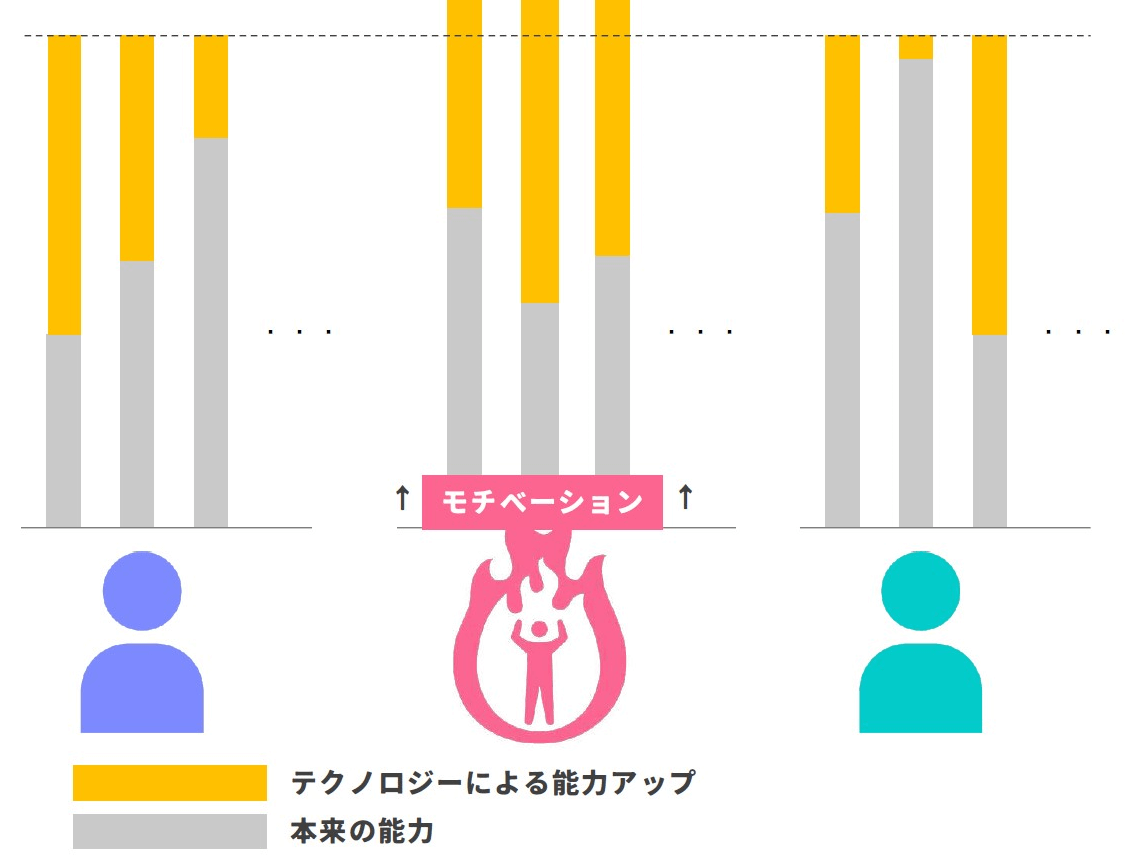
The addition of technology to innate abilities stabilizes them at a high level, but by adding "motivation" to that, we can expect to see even greater improvements in abilities (conceptual diagram created by Kawamura)
With that in mind, I thought that in the future, rather than skills and abilities, what is really important in education is motivation - what do you want to do? What do you like? So I became independent and started my own classroom in April 2016. I take on various challenges with the children, turn them into content, create my own lessons, and develop new teaching materials together with companies.
The company name COLEYO comes from the word "koreyo," which I believe means the present world in Buddhist terms. We decided on it together with the founding members with the desire to "find an easier life together with children" in this world, where we often feel it is difficult to live.
<Interviewer>
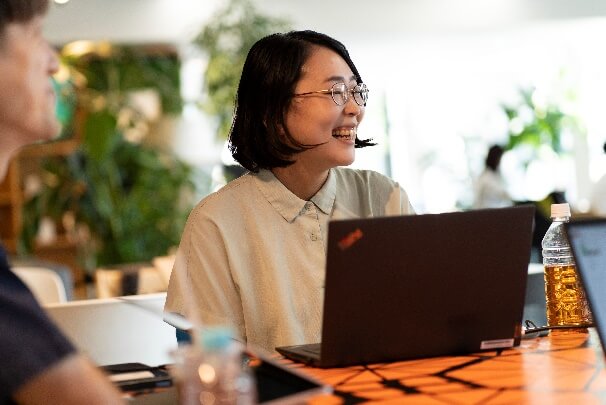
Planner NOMURA Co., Ltd.
Mao Horii
I am often in charge of cultural facilities, and am particularly good at science museums. As I majored in biology in my student days, I have been in charge of many learning facilities run by local governments, such as the Nagoya City Science Museum and the Hamamatsu Science Museum. What should be placed in the space as an "experiential device"? I place great importance on this.
Click here for the track record
Kawamura:
What exactly is a "device"?
Horii
We think about actions such as pushing and pulling, and mechanisms that stimulate thought, from both the hardware and software perspectives, asking questions such as "How do we make it react?", "What will happen as a result?" and "What can we learn?"
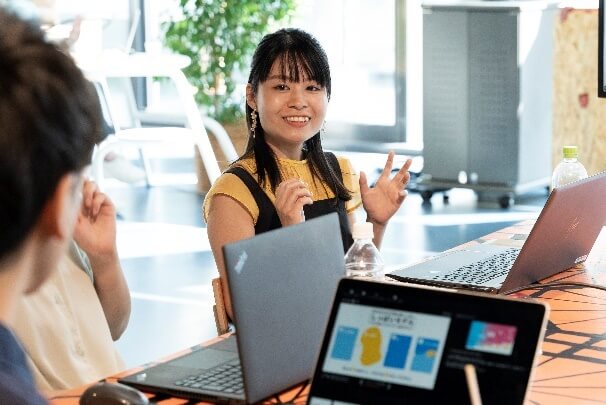
Designer NOMURA Co., Ltd.
Emi Matsuoka
I am often in charge of facilities for children. For example, I am developing the Panasonic Center's experiential facility "Panasonic GREEN IMPACT PARK *", Menicon's exhibition space for children "Miru Park", and workshop kits for children to learn about the SDGs. Personally, I also like living creatures, and this year I was transferred to a different department and am also trying my hand at working at aquariums and zoos. When I was a student, I worked part-time in a science lab, so I also like experiential workshops for children.
Click here for the track record
*Scheduled to close in December 2024
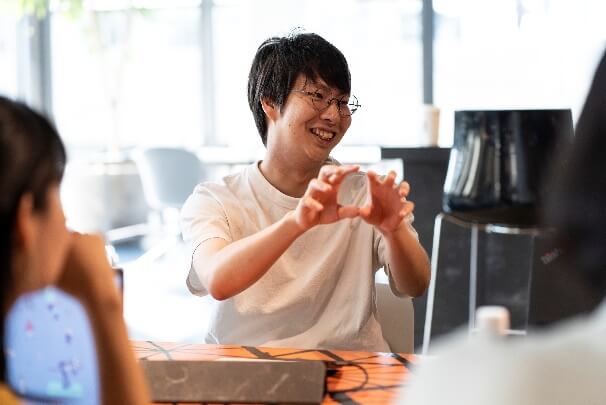
Designer NOMURA Co., Ltd.
Tani Seiho
I work on brand communication facilities for companies. I have a deep interest in natural sciences, and I have a lot of experience creating exhibition spaces that combine digital and analog expressions using projectors and other tools. I was in charge of the children's facility "AkeruE Panasonic creative museum" (hereafter "AkeruE"), and together with Matsuoka, "Panasonic GREEN IMPACT PARK". I like to think about spatial design by going back and forth between models and CG perspective expressions.
Click here for the track record
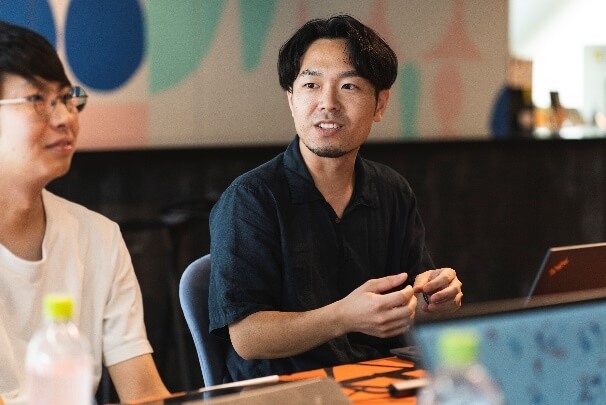
Planner NOMURA Co., Ltd.
Kohei Hirota
I am in charge of corporate brand communication facilities. I majored in media sociology at university, and I place great importance on "communication" as I work on many factory tour facilities for elementary school students. The content of the exhibits changes depending on the company I work on, so I'm excited to encounter new genres every day. For example, the "S/PARK" I was in charge of targeted parents with junior high school-aged children, but I learned a lot when I realized that my true job is to communicate the "world of science" behind skincare and makeup.
Click here for the track record
*Facilitation and writing: Satoko Yokota (nomlog Editorial Department) / Photo: Tomo Kawakami
Creating lesson content starting from children's interests N=1
Yokota
The extremely popular lesson content that you create seems to have been born from digging deep into the subjects that children were personally interested in. Can you tell us what it is?
Kawamura:
For example, two elementary school students started "The Space Boys" with the idea of "We want to broadcast everyone's voices to aliens!" They worked on "making space balloons" that could return safely to Earth. Everyone said, "That sounds fun!" So we decided to make a summary of the interesting parts into class content, and it became more and more popular. I think that the things that children say they want most are the "most successful" content.
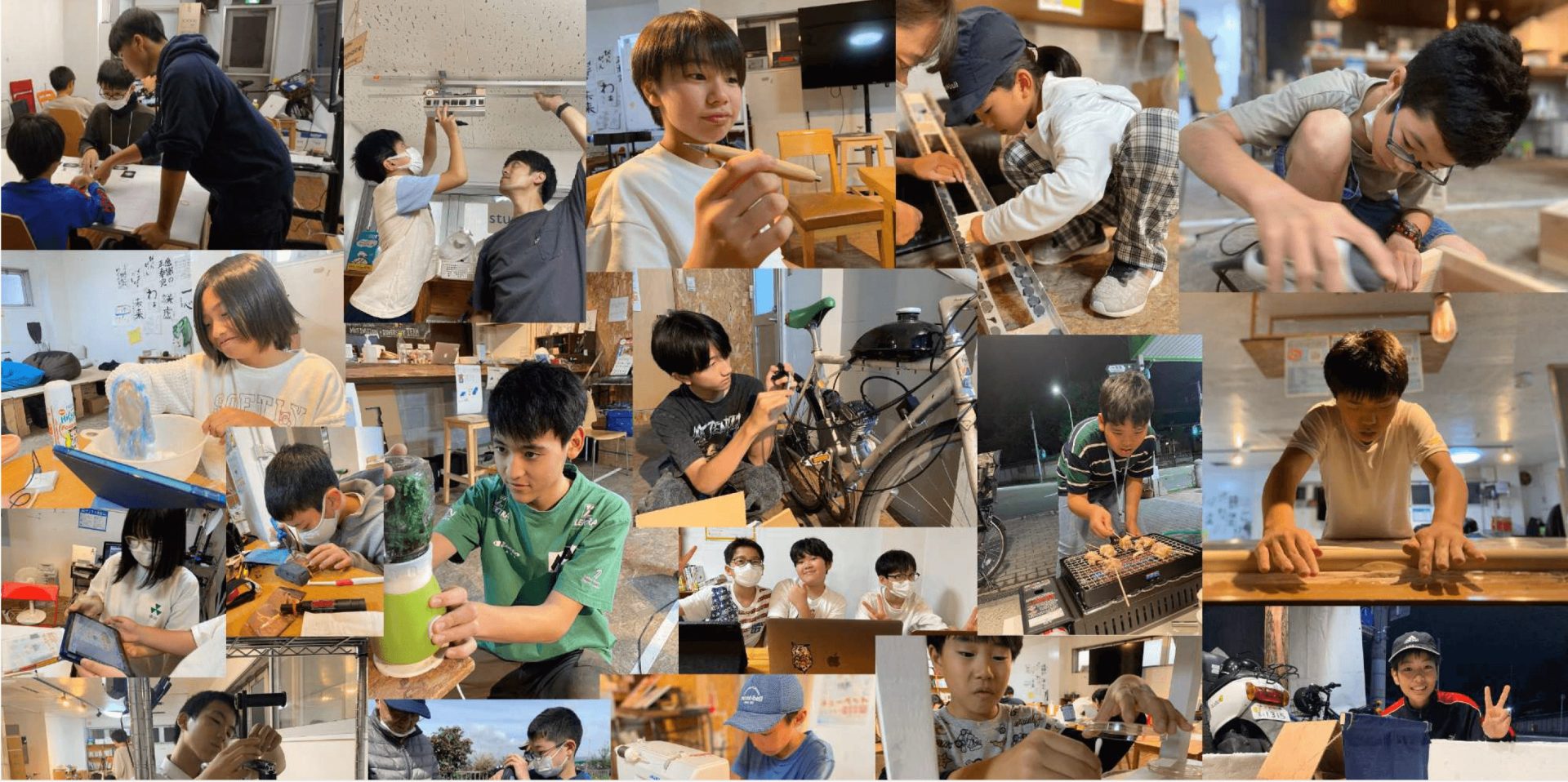
"It's hard to get silk from silkworms!" → Creating a robot that spins silk, "Is tea really antibacterial?" → Investigating the characteristics of different types of bacteria...Projects started with children's questions and concerns
It's a form of content that turns various trial and error processes into content. First, the children have to think about a point, then they actually try it out and get results, and then you can see the moment they get absorbed in it... a loop is created. Within this, I think that "failure" (I will use hiragana to express "failure" from here on) is particularly important, and I aim to create a "classroom full of failures."
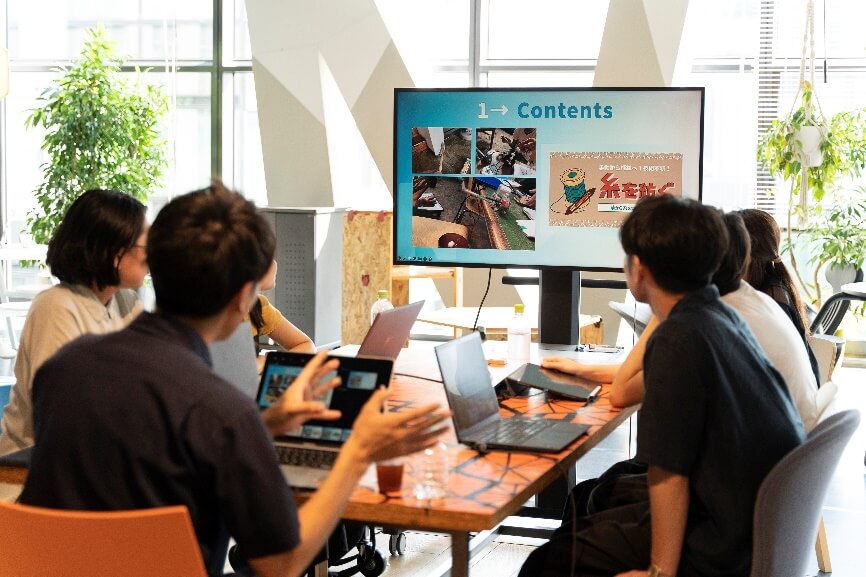
Is it a cluttered space that moves children?
Matsuoka
When I looked at Studio Ao's website, all the children who attend seem to be geniuses (laughs). Are there some kids among them who just don't know what to do?
Kawamura:
Many children come here thinking, "This looks like it'll be fun," but many of them don't have a clear idea of what they want to do at first. They all have some kind of interest or motivation, they just haven't yet expressed it in words.
We also incorporated conversational know-how to draw out that desire, but as the number of students increased, it became difficult to respond to each student individually. So we focused on the method of "increasing the number of experiences to make it easier to verbalize what you want to do," and created content called "Touch: A World Experience Classroom," which offers 24 different experiences per year. We have the children take the whole course and then create a process for them to discover what they want to do.
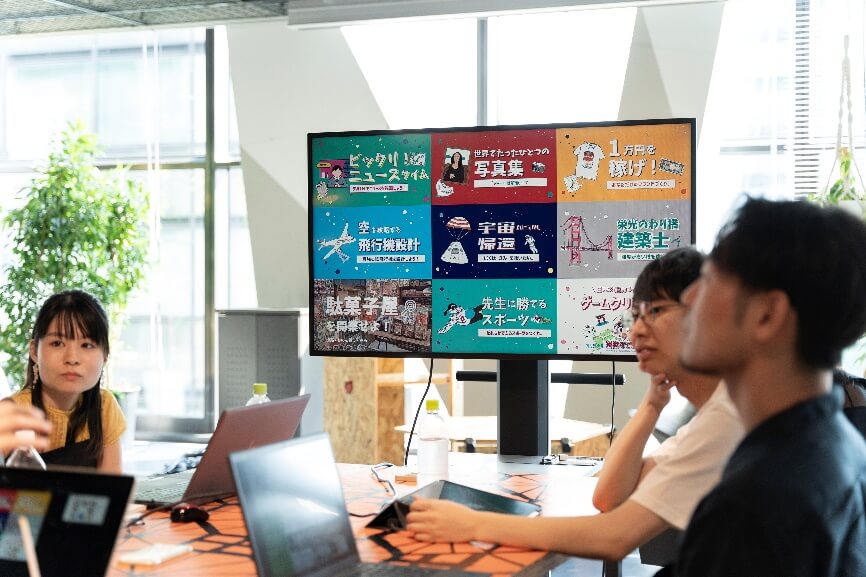
It's rare to find someone who knows what they want to do from the beginning. Even among university students, "I don't know what I want to do" is often one of the top responses in surveys at the time of employment. Children also often start out with a feeling like, "It seems interesting, so maybe I'll give it a try."
valley
Are there any children who drop out midway?
Kawamura:
Almost no children drop out midway through. Everyone has their own goals, but our classroom has an atmosphere where children are willing to try anything, so I think it's an environment where it's hard for them to stop.
valley
When you start taking lessons, your parents might say, "You'll definitely become a ____ athlete," and you might feel pressured to dedicate your life to it. I thought that the atmosphere of "Studio Ao" had the effect of lowering that hurdle. I feel that children become motivated when someone starts making something and making a mess.
Horii
There is a phenomenon called "When things are messy, you feel like doing something." There is no name for it though (lol)
valley
At Akerue, which I was in charge of, we discussed as a team and created a situation that seemed to have various triggers and various things scattered around, which at first glance seemed disorganized. I felt that this was also created inevitably at "studio ao".
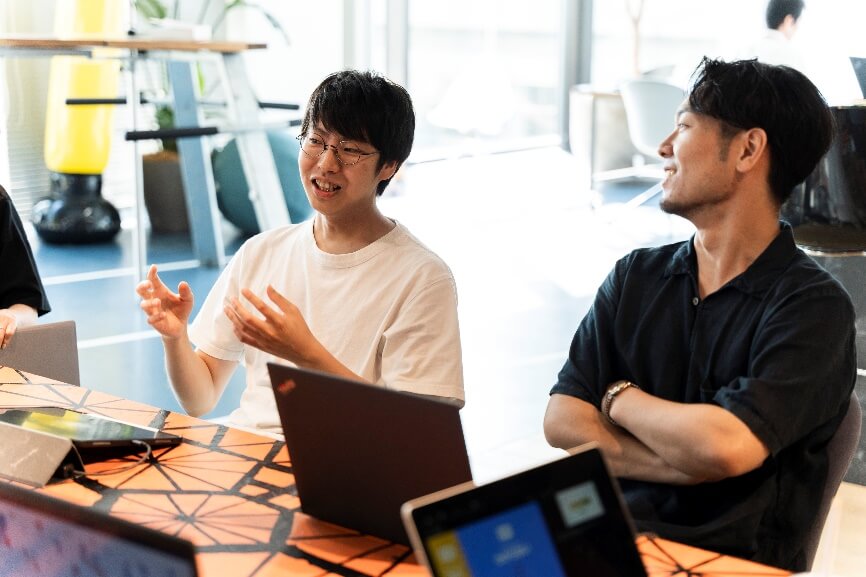
Kawamura:
Certainly, one thing I was careful about in the space of "studio ao" was not to use new furniture. I was careful not to make it seem like "you can't touch it" or "you have to take care of it." How did you create a cluttered feeling at Akerue?
There is a coercive force that resides in facilities. But even so, if you try to tackle it in various ways, something may emerge.
valley
In our usual work, we often create a big concept and then design a space to realize it. However, at Akerue, we discussed as a team that in order to enhance children's creativity, it would be difficult to define it in just one clear word, so we took the step of putting our feeling of "it would be nice if it was like this" into words.
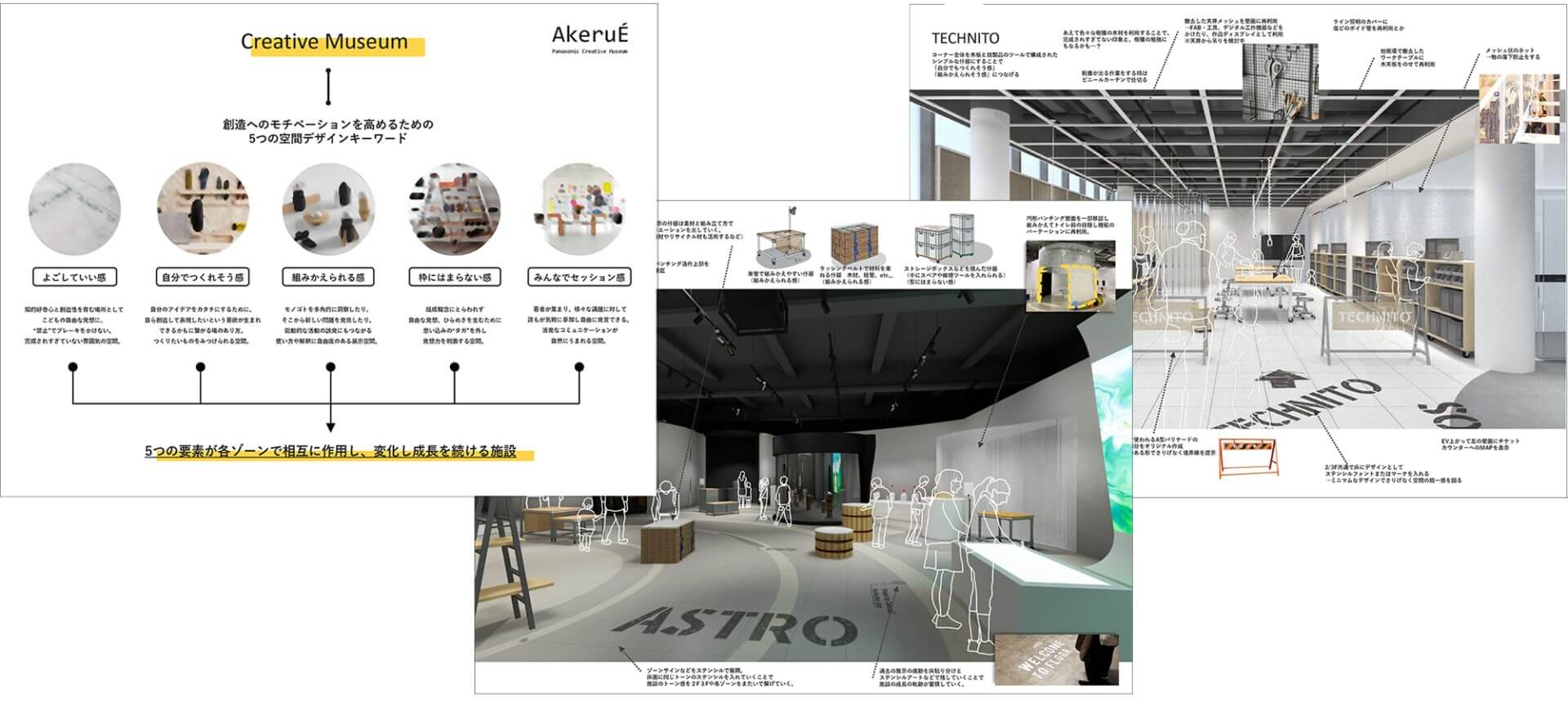
Five new design concepts for Akerue
"It feels like it's okay to get it dirty," "It feels like I can make it myself," "It feels like I can rearrange it," "It feels like I'm not confined to a box," "It feels like we're all in a session together."
Related article: Creating a space that fosters children's intellectual curiosity and inspiration. Discussing the spatial design of Panasonic Creative Museum AkeruE.
The space is composed of fixtures and furniture that allow you to see the screws and internal mechanisms in action, making it feel like "I could do this myself!" We were able to create a space that continues to evolve as it is used - an "unfinished space."
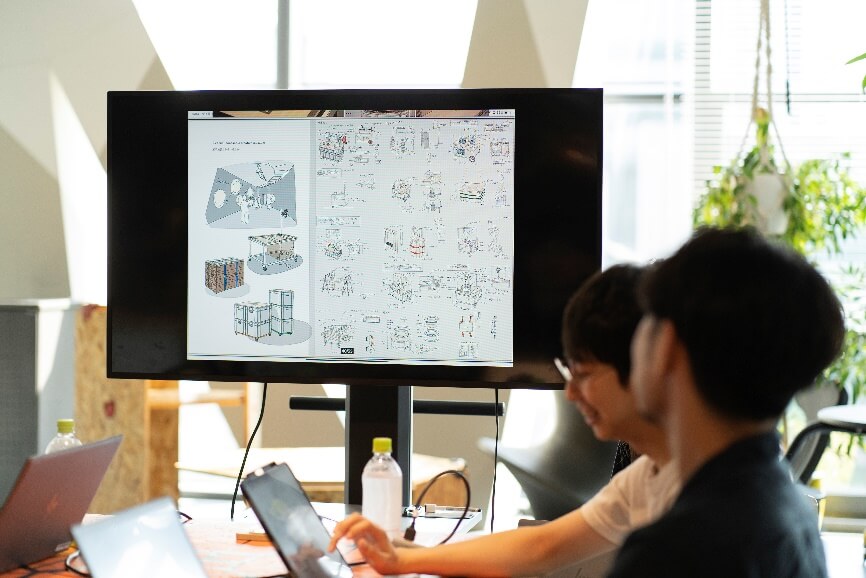
Kawamura:
I think it's ideal to blur the boundaries between the "provider" and the "receiver," and that's what you're talking about. Our classroom is basically a secret base for the children, so I tell them, "You can do whatever you want." The walls are covered in graffiti (laughs). When someone starts drawing, it grows and grows and becomes a pattern.
On the other hand, I feel that it is quite difficult for children to become the main players in a facility. The space of the facility has some kind of purpose, and there is a compulsory force at work to guide them there... I often feel that there is not much room for the kind of content we are currently working on. That is why I want to take on the challenge of getting into that space.
Horii
In my work on cultural facilities, I often suggest, "Let's put children at the center and create an ambiguous space with a degree of freedom!" but it's hard to get people to understand.
valley
The ideal situation would be something like, "When the children enter the facility and wander around freely, something will emerge that has changed!"
Kawamura:
It's like "Gulliver's Tunnel"! Lol
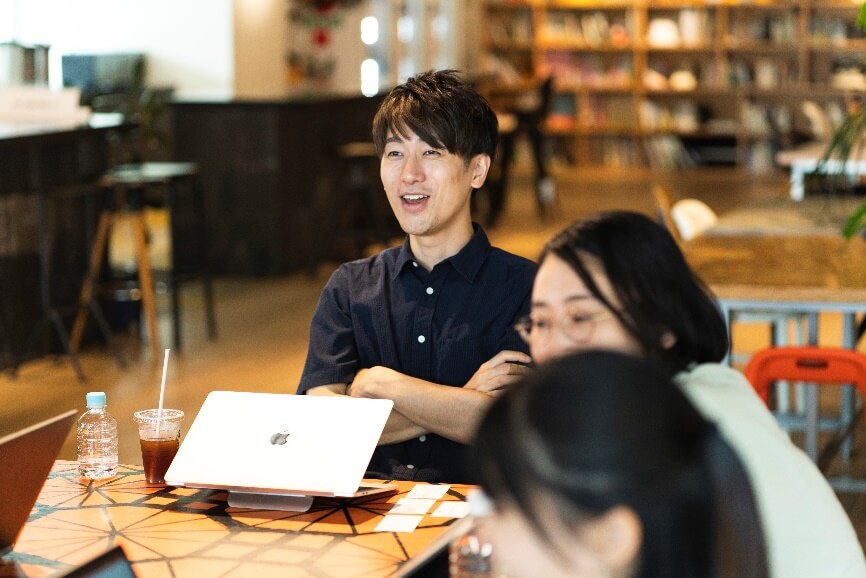
Hirota
I really empathize with the idea of "the forcing power of facilities." In my role as a corporate promotional facility manager, even if 70-80% of the visitors are not interested, I think the facility side is hoping somewhere that "if we forcefully challenge them with something, something might emerge." So the starting point is the desire to challenge them from various perspectives such as science, food education, art, etc., and get them interested in us.
To see how it actually works, I have observed the reactions of children at the facilities I was in charge of. For example, I sometimes hear comments like, "Oh, we did this in a science experiment!" that make the children feel close to me, and I feel very happy, thinking, "I'm so glad they saw it from that perspective!" It was at that moment that I realized that sometimes something really does sprout inside children when you challenge them to do something.
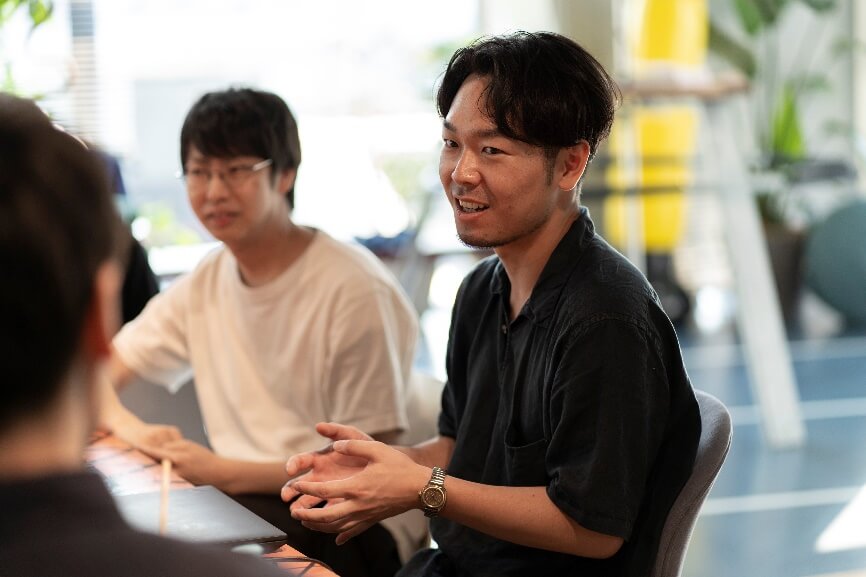
On the other hand, the appeal of a facility is not just its appearance or functionality, but also the operational aspects and realism of the people giving explanations there, the events being held there, etc. I always think that a space that is as flexible as possible would give more freedom.
Horii
Public facilities are expected to serve the public interest, so the perspective is "everything is for the sake of children's education or to spread science to society..." However, one of the goals of corporate promotional facilities is to generate profits, so the premise is often what the company wants to convey to children.
valley
However, if we can turn this around and create an atmosphere that makes children think, "I wouldn't mind going along with that (the company's plans)," it will also improve the brand's image, which is an ideal situation.
Now that interest has been sparked, how can you follow up?
Kawamura:
Listening to everyone's stories, I felt that facilities have the ability to make an impact on children by sparking their interest, to move their hearts, and to lead to the start of something. For example, I think the value of a facility increases if it provides experiences that cannot be replicated at home, such as "enormous size" or "unexpected movements." Another thing I thought was that after children become interested in something at the facility, there must be an important factor that broadens that interest even further. What do you think?
Horii
NOMURA Co., Ltd., Ltd. has a lot of know-how in expanding the target audience to an unspecified number of people and creating an opportunity for interest. Although we are involved in the entire project from planning to operation of the facility, there are cases where we are not involved in the operation after construction. In that case, there is no way to measure and evaluate the effects of how the children who actually visited the completed space have changed, and the challenge is that we do not have the know-how to connect it to the next step.
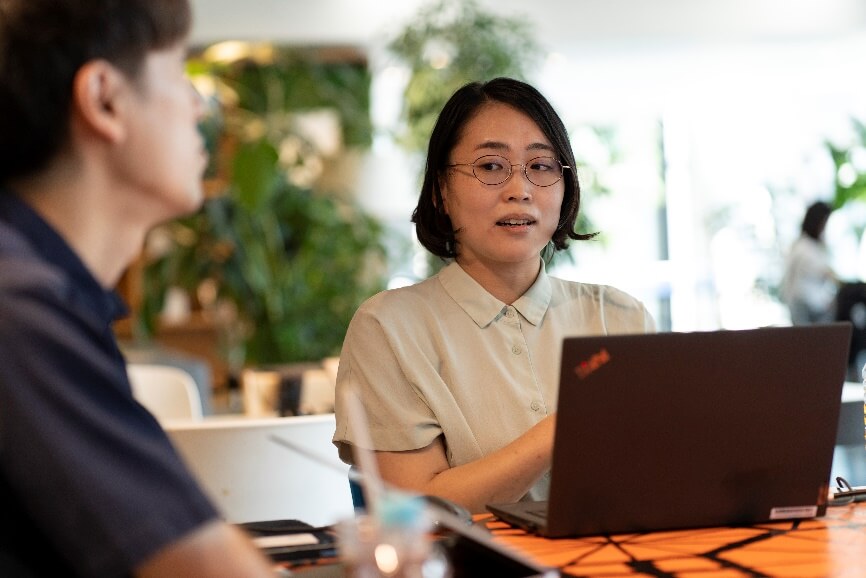
valley
It's definitely a good idea to measure the effectiveness of a project. At Akerue, Loftwork regularly sends us evaluation reports of the project, which has been very helpful. I'd like to do something like this at other facilities, even if it's just a visitor survey.
Hirota
At Menicon's "Miru Park," we ask visitors to fill out questionnaires and conduct interviews during events. When we do this, we find that the voices of parents are surprisingly more useful than those of the children. Parents say things like, "Even though the content is for my child, it made me realize how much knowledge we (the parents) lack!" I think that adding our know-how to this will produce the best results.
valley
To create better spaces and experiences, I hope that there will be more diversity in post-handover involvement, such as maintenance of the facility's space and experiences. I hope that there will be more ways of involvement, such as updating the space together after it is created and identifying issues through effect measurement.
Kawamura:
Our classroom is on one continuous floor with no walls, so we can hear everyone's voices. It's easy to reach a common understanding, such as "Someone reacted like this, so it must be like this," and it's important that this happens naturally.
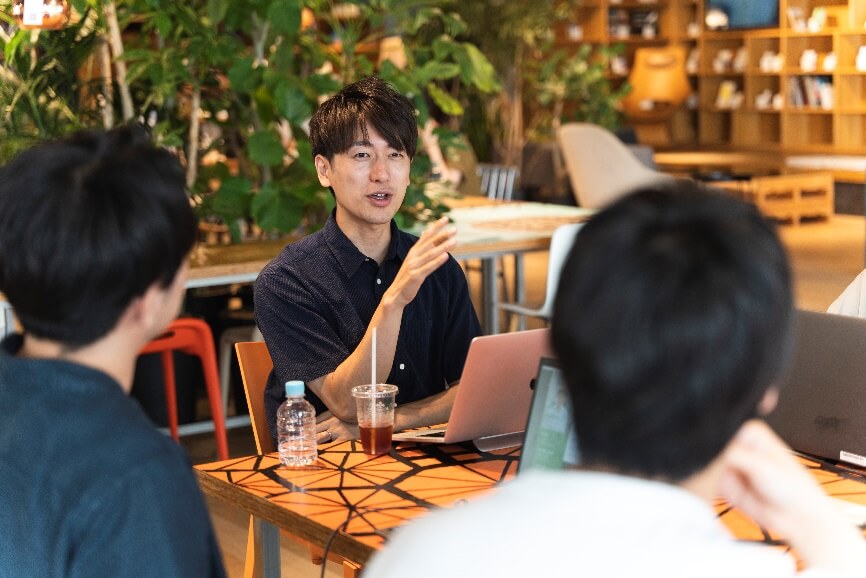
Matsuoka
The number of cultural facilities that we operate after handing over is increasing. In fact, there are 17 facilities across the country. (At the time of the interview)
Horii
The Tama Rokuto Science Museum is a prime example of this. It is a popular facility that continues to produce attractive content in collaboration with headquarters staff.
Related article: How to create a special exhibition Tama Rokuto Science Museum A deep look at living things "Rokuto Insect Encyclopedia"
What we can do to build facilities for children. The key is "failure"
Matsuoka
In "studio ao", children are the main characters, so one-on-one communication is deep, and I think it is an ideal environment to raise children's motivation. Since an exhibition is aimed at an unspecified mass of people, it is difficult to realize in a facility, even though we know that deep communication is best.
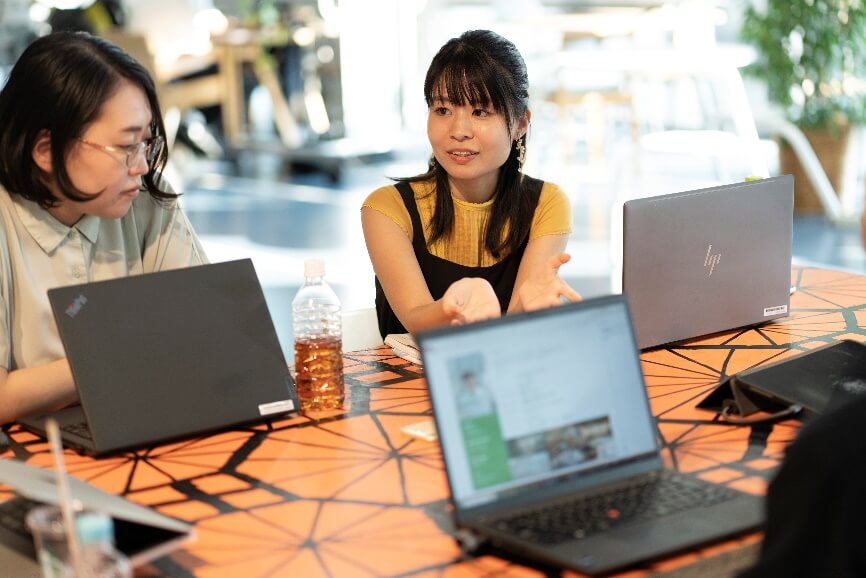
Kawamura:
The important thing is how to incorporate failure into the facility, and I think it would be good to incorporate elements of failure into the devices and programs of the experience. When children feel like they want to try something, as long as they have the people, materials, and financial information, as well as the space and time, they will try again and again. In a world where there is a strong tendency to "avoid failure," I would like to create a flow where they can "fail with peace of mind → devote themselves a little more → aim for even higher."
Horii
At a certain facility overseas, there was a challenge corner where people had to see how high they could throw a piece of paper, and the floor was covered in paper. I think that kind of messy feeling, that environment where it's okay to fail, is a good thing.
Hirota
I imagine some kids get fed up when they fail repeatedly, but what is it that motivates them to want to try again?
Kawamura:
"Failure and success" sounds like a dichotomy, but in fact there are many ways to set the line between these two. For example, rather than saying "If you don't reach 50 centimeters, you're all trash!", it's more interesting to say, "You fell 10 centimeters short of the goal you set for yourself!" So I think the mechanism lies in how you design "failure." That is "failure" that doesn't dampen motivation.
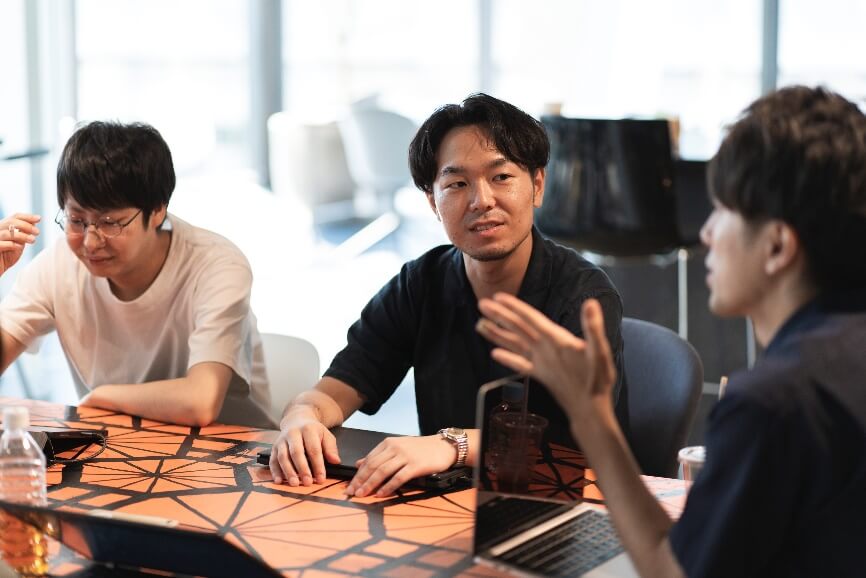
"Failure" is actually quite fun. And when taking on a challenge, it's important to have a deadline and a goal.
valley
In "studio Ao," even after you fail, your peers will still be there to watch you and talk to you... so even if you're challenging yourself alone, you're not alone... Human power is essential to not give up on a challenge, and I'm concerned about how to incorporate that kind of care into an automated system like digital content.
Hirota
It's interesting to have a goal that you set for yourself, rather than one that someone else has set for you. I felt that if we could create a space or experience where the goal is not defined by the facility, we might be able to get a little closer.
Kawamura:
I think it's important that there is "failure" even in a simulated form. For "real failure," it's important to have "your own questions" and "failure," but that's a fairly advanced situation. I get the impression that it's difficult for the facility to deal with "your own questions" and "failure."
valley
For example, how about creating things that are likely to fail in advance and making them common?
Horii
That kind of thing is obvious to kids who have good intuition (laughs).
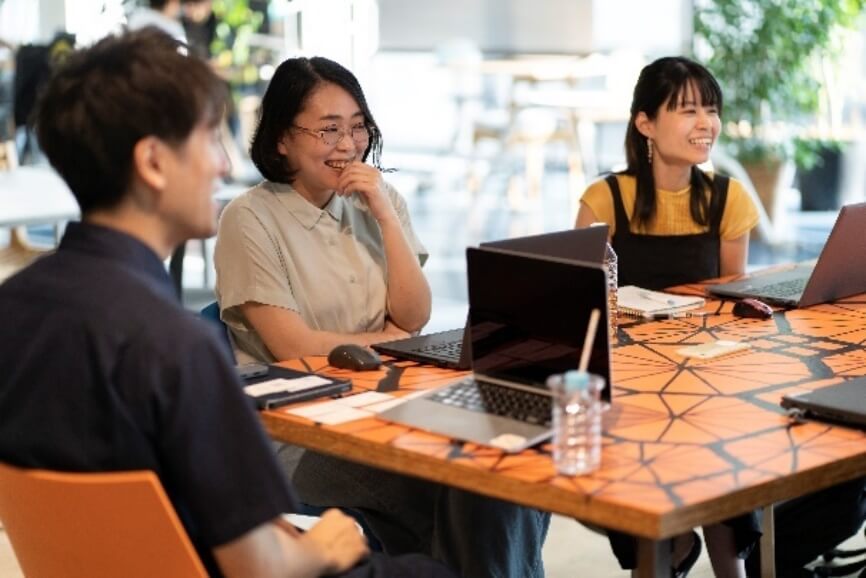
valley
What if we started with a task that was impossible to achieve? What if we made the format of the lesson something that was as close to the right answer as possible, but didn't have a completely correct answer? Since there is no such thing as a perfect score, it might be more tangible for children.
Matsuoka
For small children, it can be easier to understand if the answer is clear. The game at "Panasonic GREEN IMPACT PARK" where you earn points when you clear the "forget to turn off the lights" challenge is popular.
Kawamura:
Another important thing is how you give and speak to the children as feedback. In our classroom, we are conscious of not giving negative feedback such as "No good," "Wrong," "Different," or "Strange." Instead, we say things like, "That was close! If you could do a little more, you could do even better!" or "That's great! Let's get 120 points!"
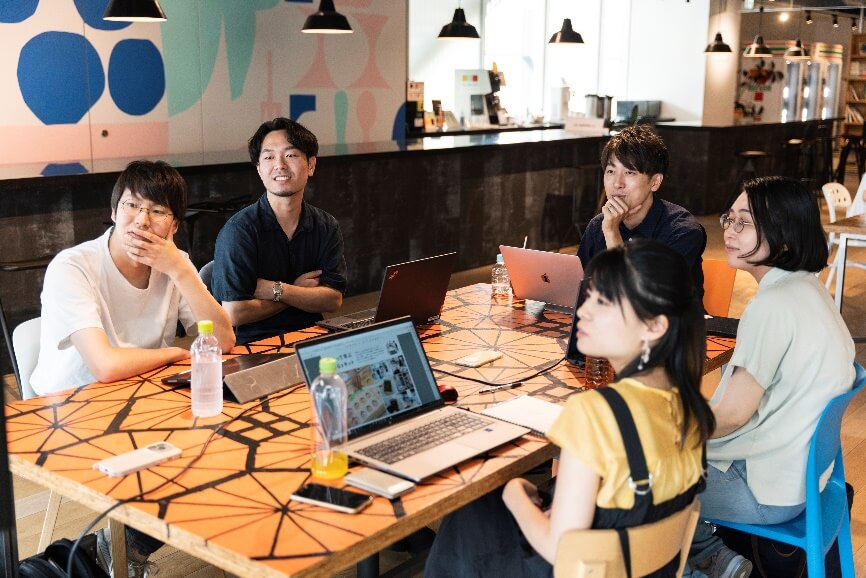
valley
That's important!! I want to do that at work too! If someone told me, "Let's get 120 points!" I'd work hard too! lol
Yokota
Thank you all for your valuable insights.
Nomura members' thoughts after the discussion
Matsuoka
I think Kawamura's approach to each and every child is exactly what education needs in this day and age. It was a valuable time packed with meaningful stories. In particular, I think designing "failure" is an important element in creating an exhibition space, so I would like to incorporate it.
[Follow-up] I visited Studio Ao on the weekend one week after the interview and was impressed by the way the children explored what they wanted to do and gave lively presentations! It was a wonderful classroom that made me think, "I'm looking forward to the future of Japan!"
Horii
While there are an increasing number of educational businesses that promote inquiry-based learning, I felt that "studio ao" is original in that it is created together with the children, and everything starts from the children's motivation. I think it is because they have repeated direct dialogue with the children that they are able to trust them and cherish their ideas. That relationship is wonderful!
valley
I was very impressed by the story that even children who can't find what they want to do or what theme they want to do at first in the "World Experience Classroom Touch" begin to find what they want to do even in things that are unrelated to the experiences they had after being exposed to many different experiences throughout the year. Even after the discussion, I think that this kind of variety of experiences and letting them ingrain themselves is a point that applies not only to children but to all human beings. It was a valuable opportunity that gave me a lot to reflect on. I'd love to stop by again when I go to Kyoto!
Hirota
As I listened to the talk, I felt that there is a lot of "children's independent curiosity" at "studio ao". I learned a lot from the talk because I am keenly aware of how difficult it is to nurture that curiosity. I felt that if I could hear about the mechanism by which this spreads among the local community and children, whether it is something unique to extracurricular activities or something that comes from the "local community", I could use it to "create a space".
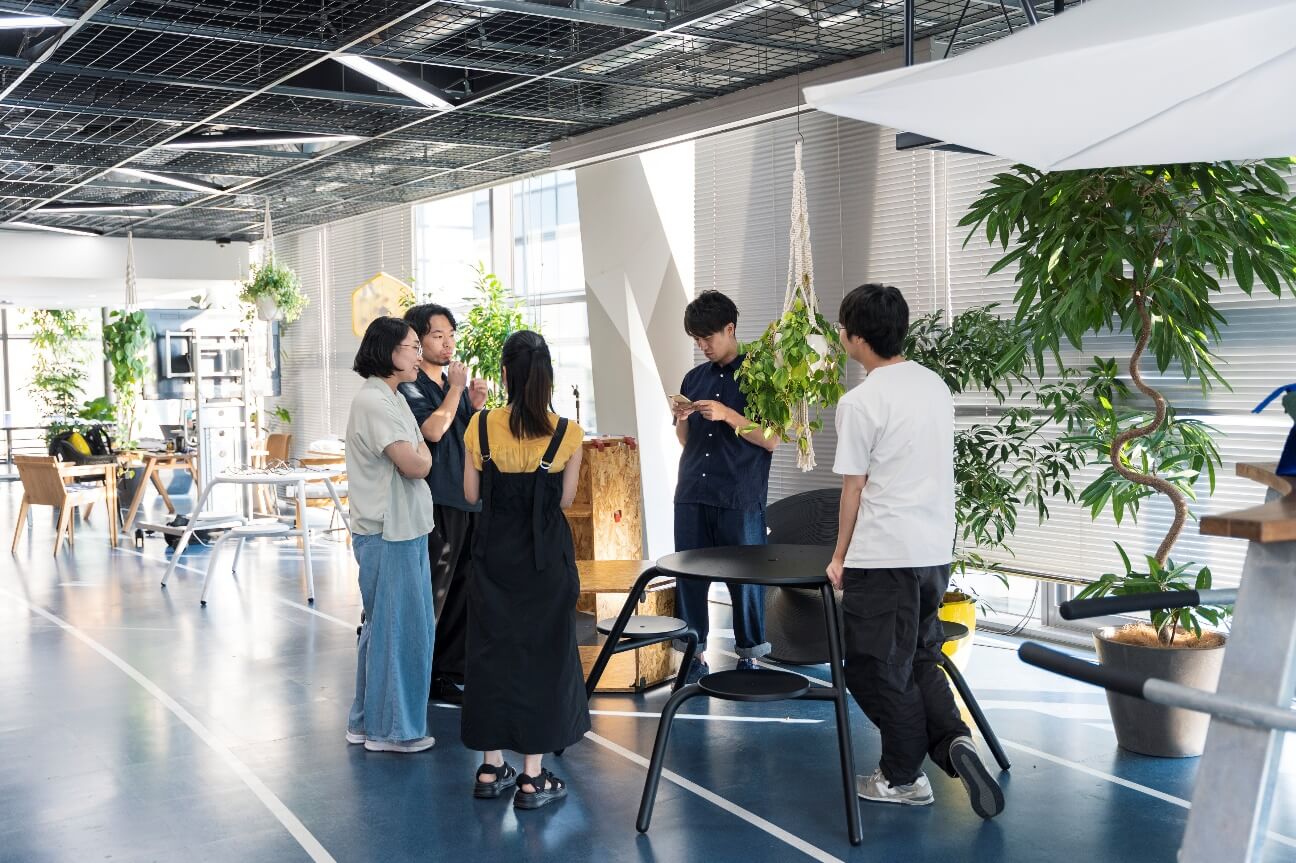 After the discussion ended, Kawamura asked, "What facilities do you all recommend?" The members couldn't stop talking in response to his question, with responses like "That place was great!" and "Do you know this place?"
After the discussion ended, Kawamura asked, "What facilities do you all recommend?" The members couldn't stop talking in response to his question, with responses like "That place was great!" and "Do you know this place?"
Like this article?

